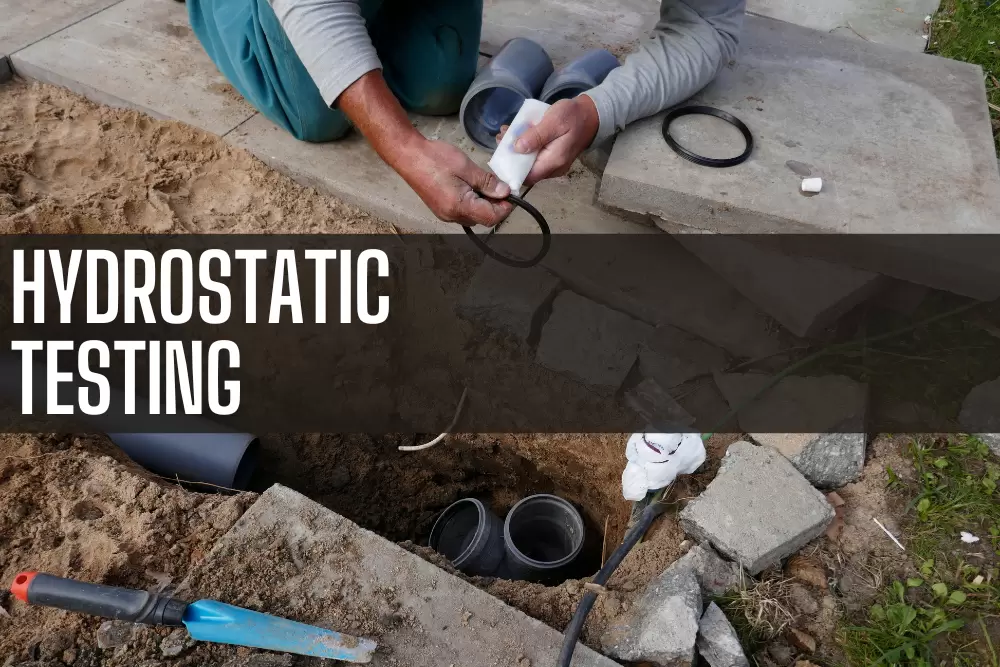Hydrostatic Testing in Real Estate: A Complete Guide for Buyers, Sellers, and Agents
What is a Hydrostatic Test?
A hydrostatic test is a diagnostic procedure used to evaluate the integrity of a home's underground sanitary drain system. The process involves temporarily sealing off the system, filling the pipes with water, and monitoring the water level for any drops. A decrease in water level indicates a leak, which could be caused by aging pipes, soil movement, or previous foundation repairs. This test is particularly recommended for homes built before the early 1970s, as they commonly feature cast-iron piping prone to corrosion and deterioration. Additionally, properties that have undergone foundation repairs are at a higher risk for underslab plumbing issues due to potential damage incurred during the repair process.
Why is Seller Authorization Required for Hydrostatic Testing?
The Texas Real Estate Commission (TREC) has implemented specific guidelines for hydrostatic testing, requiring explicit written authorization from the seller before the test can be conducted. Paragraph 7A of the TREC Promulgated Contract mandates that "any hydrostatic testing must be separately authorized by Seller in writing". TREC Form 48-1: Addendum for Authorizing Hydrostatic Testing, is promulgated to protect both buyers and sellers by clarifying responsibility and ensuring informed consent.
Key points from the TREC addendum include:
Written Authorization: Sellers must provide written approval before testing can proceed. Authorization cannot be granted through special provisions in a standard contract—it must be documented separately using the approved TREC form.
Risk Allocation: The addendum allows parties to specify who will be financially responsible for any damages caused by the test, with options for full or limited liability.
Plumber Involvement: Licensed plumbers typically require the seller to request the service directly, avoiding liability complications when buyers initiate the process.
Risks Associated with Hydrostatic Testing : While hydrostatic testing is a valuable tool for detecting hidden leaks, it does carry certain risks, including:
Increased Pressure Damage: The test exerts additional pressure on aging pipes, potentially causing further leaks or even complete pipe failure.
Flooding and Water Damage: If a significant leak is present, water may escape into areas beneath the home, leading to costly repairs.
Legal and Financial Liability: Improper authorization or misunderstandings about liability can result in disputes between buyers and sellers, emphasizing the importance of using the correct forms and seeking legal guidance.
Why Hydrostatic Testing Matters in Real Estate Transactions
For buyers, a hydrostatic test offers peace of mind, ensuring they are not purchasing a home with hidden plumbing issues that could result in costly repairs down the line.
For sellers, proactively conducting the test (with proper authorization) can demonstrate transparency and potentially increase buyer confidence.
For real estate agents, understanding the hydrostatic testing process, its potential risks, and the required authorization forms is crucial in guiding clients through a smooth transaction and mitigating liability.
Cost of Hydrostatic Testing
The cost of hydrostatic testing typically ranges from $500 to $800+, depending on factors such as the size of the home and accessibility of the plumbing system. While this is an added expense, it is often considered a worthwhile investment, particularly for properties with a history of plumbing issues or those in areas with shifting soil conditions.
Best Practices for Agents and Buyers
Always consult with a licensed plumber before initiating a test.
Ensure the TREC Addendum for Authorizing Hydrostatic Testing (Form 48-1) is properly completed and signed.
Discuss potential repair solutions with the seller in advance if a leak is detected.
By following these guidelines, buyers, sellers, and agents can navigate the hydrostatic testing process with confidence, minimizing risk while ensuring the long-term integrity of the home's plumbing system. You can see TREC Addendum for Authorizing Hydrostatic Testing (Form 48-1) below.





